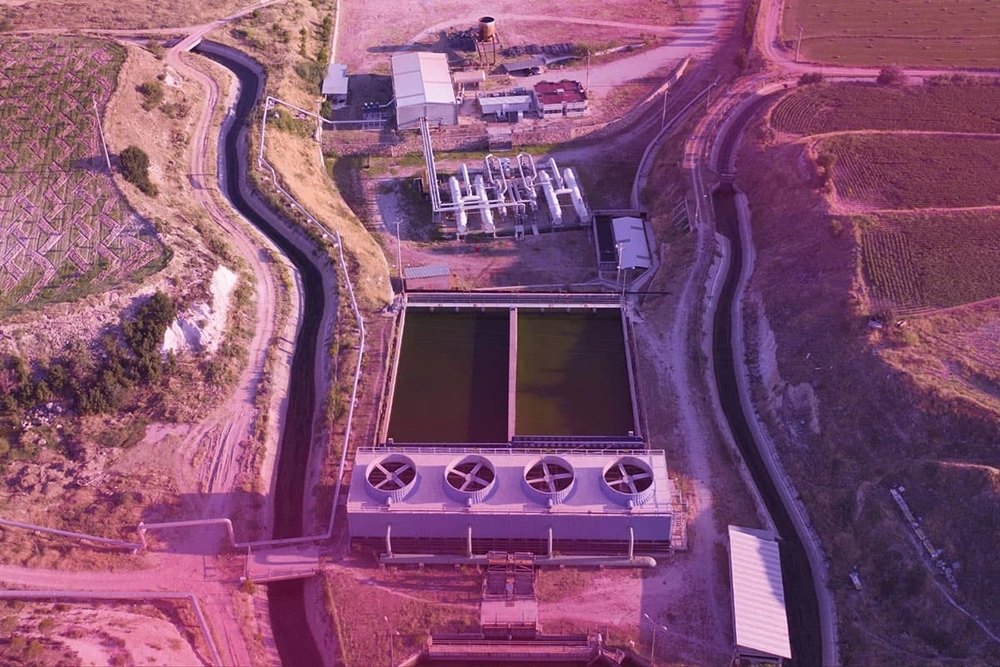
What is Geothermal Energy? How to Get It?
What is in this article?
According to 2015 data from the World Bank, 80% of global energy needs are generated from fossil fuels such as coal and petrol. However, alternative sources are becoming more important as the aforementioned sources have started to deplete and they cause environmental pollution.
Geothermal energy is an important alternative source since it does not cause air pollution and has low CO2 emission. More extensive policies and studies can make it possible to benefit from geothermal energy to meet some part of energy needs.
In this article, you can get detailed information on all matters you are wondering with respect to geothermal energy.
What is Geothermal Energy?
Geothermal energy is generated from hydrothermal mass. Hydrothermal mass is found on earth’s crust and is fed from the watersheds on earth. Comprised of steam and water with minerals as well as gases, hydrothermal mass can have different temperatures in different regions.
As for the etymology of the word “geothermal”, “geo” means “earth” in Greek and “thermal” means “heat-related”.
At this point, we should also answer the question “Is geothermal energy renewable?”. One of the types of renewable energy, geothermal energy is found on earth’s lower layers and have been used for heating, cooking and medical purposes for centuries.
Heat and steam are used to generate electricity from geothermal sources. At conventional plants, the fluid produced in wells is separated into steam and water, after which the steam is sent to turbines. Then, generators are used to produce electricity.
Where is Geothermal Energy Used?
Although mostly used in heat and electricity generation, geothermal energy is also used for thermal tourism and health purposes. However, we can categorize its areas of use into direct and indirect uses.
-
Direct Use Areas
At temperatures below 150°C, thermal energy can be directly used in greenhouses, district heating, industrial processes and agricultural activities.
Aydem’s Sarayköy / Kızıldere Geothermal Power Plant in Denizli is one of Turkey’s geothermal energy sources that have high temperatures. In this region, geothermal energy is commonly used for heating purposes.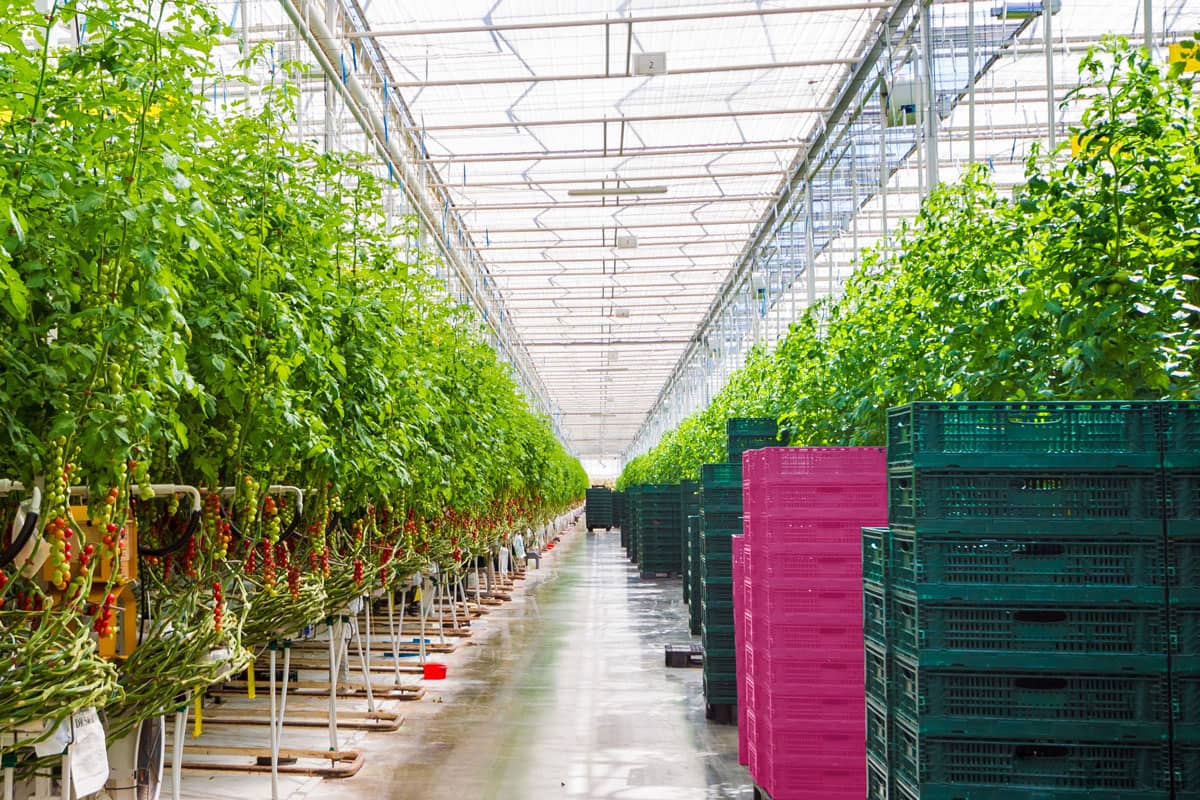
Geothermal sources above 40°C allow t use central systems to heat cities and buildings. Similarly, greenhouses can be heated for horticulture, fruit growing and early vegetable growing.
Geothermal energy is used in numerous ways in the industrial area. These geothermal systems are used to dry timber and grains, process paper pulp and wastewater, dry vegetables, and obtain some chemicals.
Although it is possible to use this method to dry agricultural products, it is done by only 10 countries globally. Some countries such as Japan, the USA, Iceland and Switzerland utilize geothermal sources to melt the ice on the road resulting from heavy snowfall.
Also, thermal tourism is an important economic source in 45 countries around the world. Geothermal sources are used at spa centers and hot springs.
-
Indirect Use Areas
Generating electricity from geothermal energy is an indirect use of this source. Wet or dry steam and water obtained from the source through drilling are used for generating electricity. This energy can be used in households, workplaces and agricultural lands.
What is a Geothermal Power Plant? What Are the Types of It?
Geothermal power plants are places where geothermal sources are used to produce electricity. These plants are categorized into dry steam, binary cycle and steam jet (flash) types. This categorization is based on the temperature of the relevant geothermal source.
Minimum temperature required for dry steam plants is 150°C. Single or double phase fluid flash plants are used for temperatures at and above 180°C. Here, steam is separated from the fluid before it is directly fed into the turbine to generate electricity.
At medium and low power sources where fluid temperature is between 100 and 180°C (enthalpy), double fluid cycle plants, i.e. binary plants are used. In heat separators, the fluid is loaded with another fluid with a low liquefying temperature, such as iso-pentane, pentane or isobutane. This fluid expands in the high-pressure turbine to turn the turbine.
At the exit of the turbine, it is liquified in the condenser to reenter the cycle. This allows continuous energy generation. Most of the plants in Turkey are binary.
Double fluid cycle turbines are comprised of two cycles. The first one is the fluid that conducts heat and is obtained through the generation well. The second cycle, called pentane, turns heat into energy. To ensure this cycle, plants have two areas.
In the electricity generation area, electricity is generated through organic Rankine cycle. In other words, the energy obtained from heat machines working with steam in plants is used to produce electricity. The auxiliary services area, on the other hand, is comprised of generation wells, reinjection system, pumps and lines.
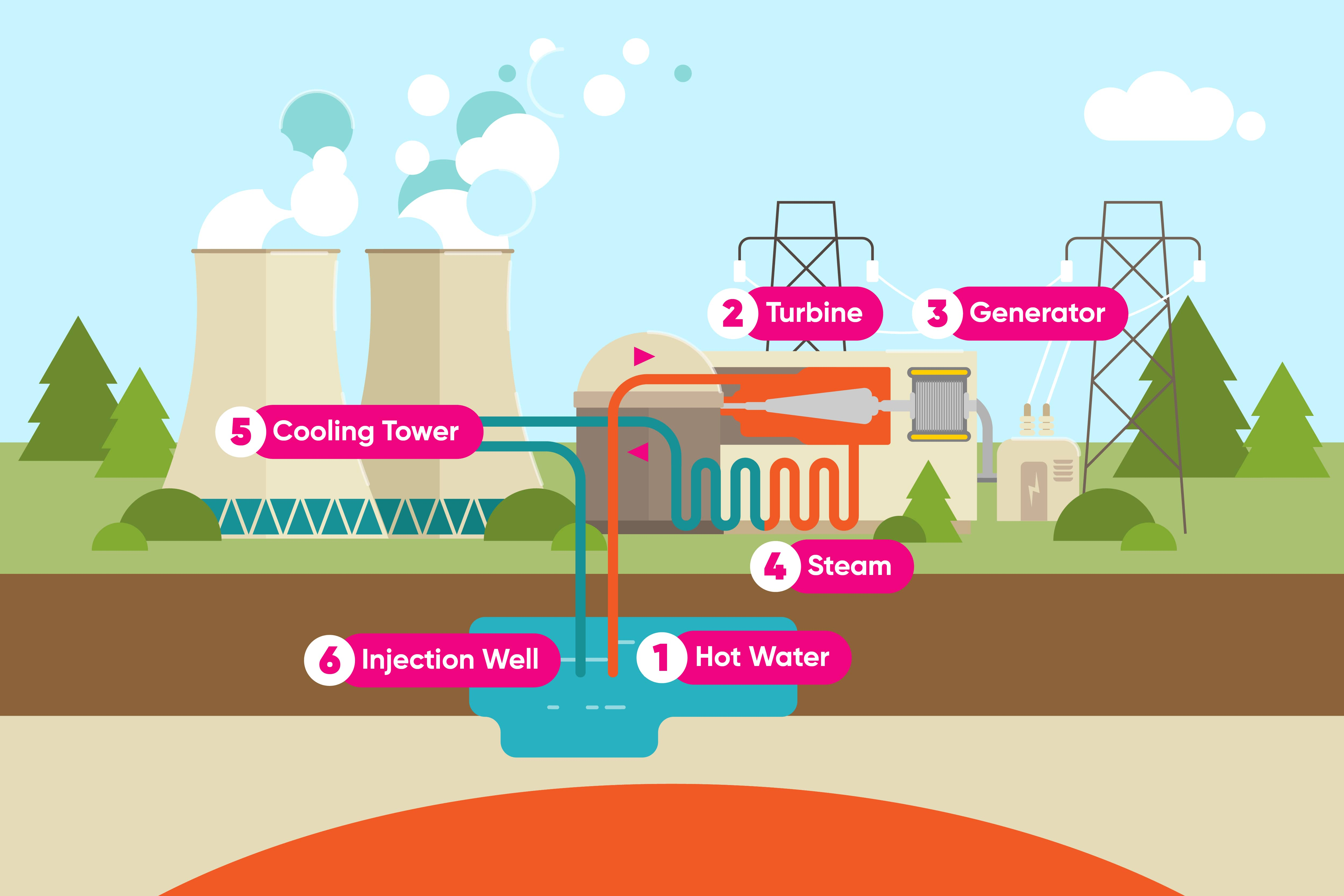
-
Dry Steam Cycle
Dry steam cycle plants are the most cost effective type of geothermal energy plants, working with the simplest operating principle. These plants are used directly in sources that produce hot steam. This method does not use condensers,
i.e. machines that condense the fluid. So, steam coming from the source passes through the turbine before it is released into the atmosphere.
However, releasing the steam into the atmosphere causes environmental pollution, which is why steam cycles with condensers are preferred. In cycles with a condenser, the steam is not released into the atmosphere at the turbine exit but
captured in the condenser found at the end of the turbine. It is then sent back underground. High efficiency is ensured through the condenser as more pressure is generated at the exit of the turbine.
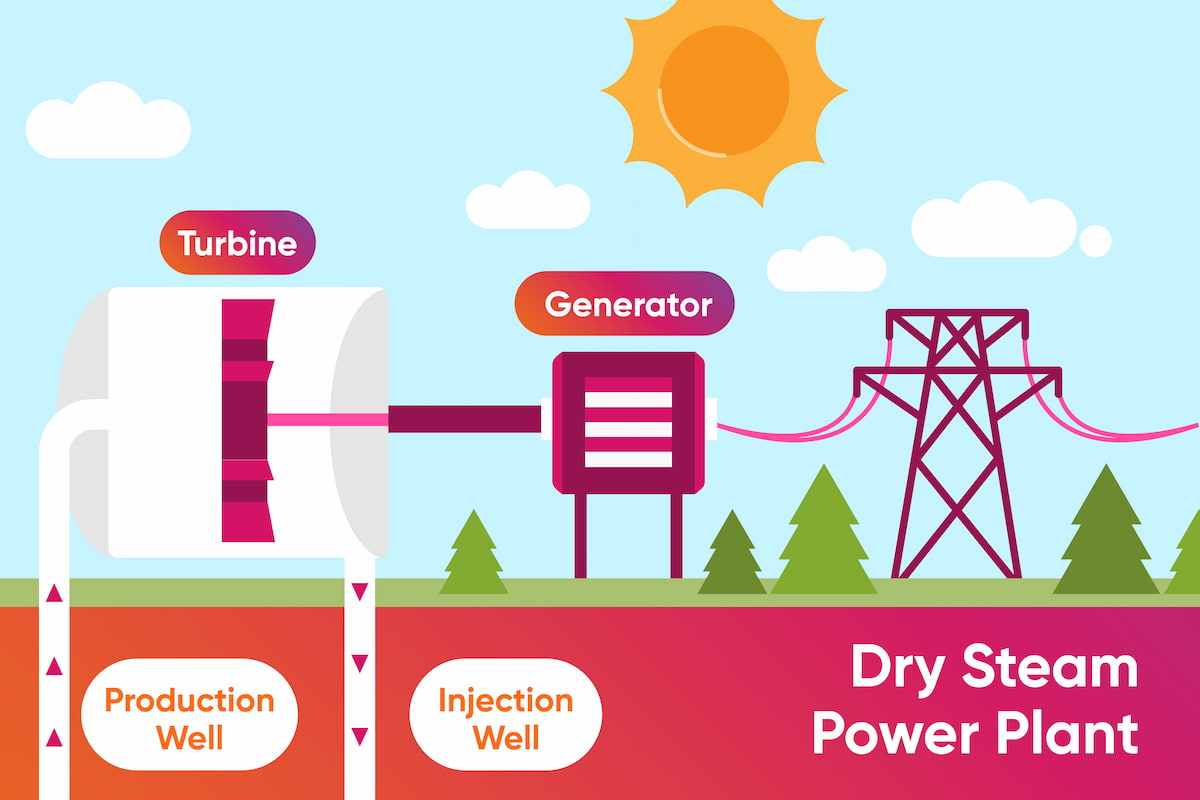
-
Steam-Water Cycle (Flash Steam)
The geothermal fluid coming from underground is not always comprised of steam only. For fluid that is made of water and steam, water is separated from the steam if the amount of steam is sufficient. Steam is transferred to the turbine while water is sent underground.
However, there are some cases where the steam amount is not enough or the fluid is solely comprised of water. In such a scenario, water is sprayed in an attempt to obtain steam.
Then, double-phase fluid is obtained and transferred to the separator. Steam from the separator is passed through a turbine. This step can be repeated if fluid temperature is extremely high.
Geothermal cycle can be set to single or double spray depending on the number of spraying procedures. However, usually spraying is not performed more than twice as the cost is high.
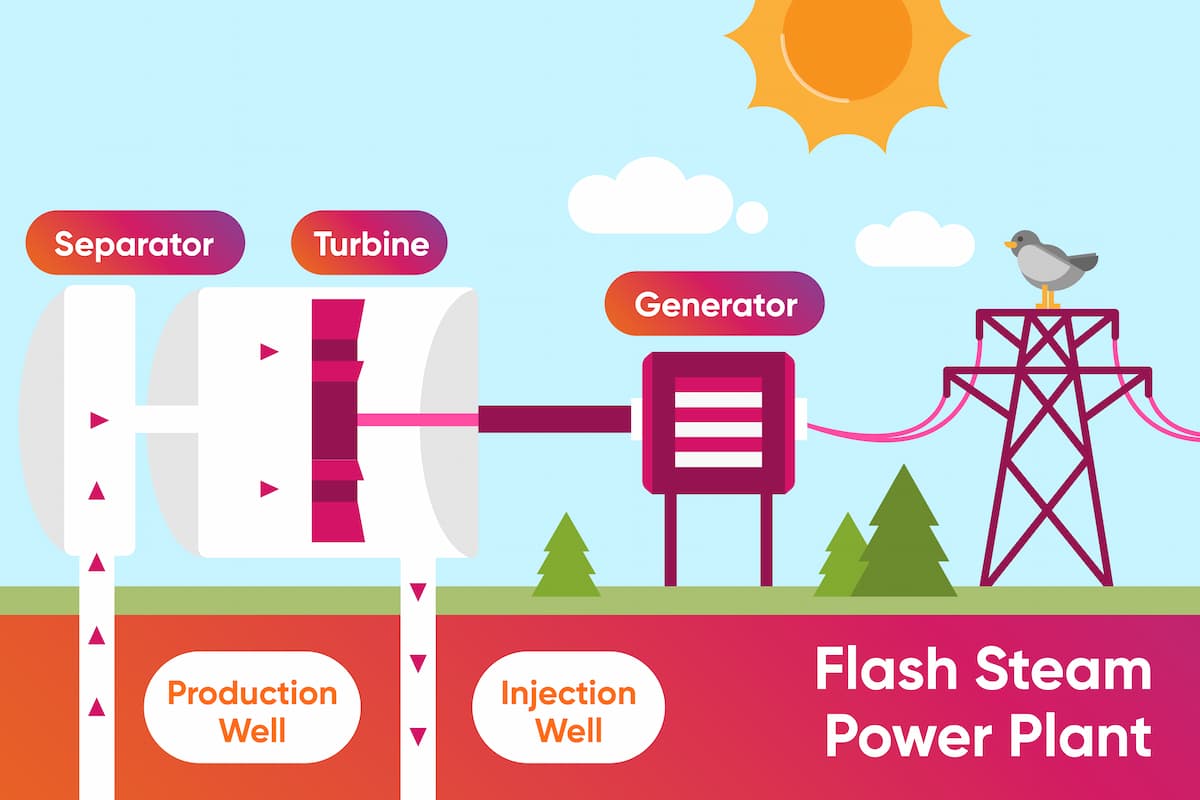
-
Double Cycle (Binary)
In sources with a low or medium temperature, or in double cycle (binary) processes used with residual heat, it is ensured that the fluid, which has a lower evaporation temperature than water, is evaporated. The evaporated fluid is used to turn the turbine.
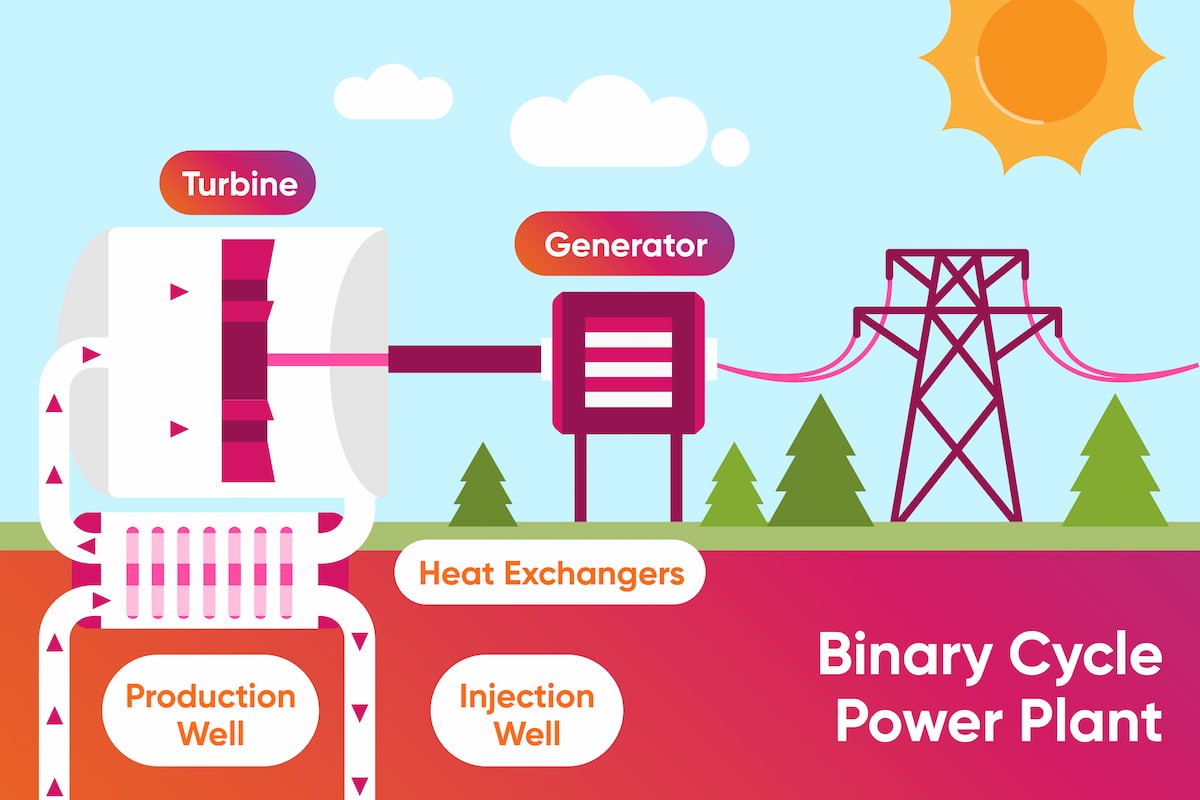
Classification of Geothermal Sources
Classification of geothermal sources depends on the enthalpy value, i.e. temperature value of geothermal fluids. An indication of thermal energy content, enthalpy provides an overview on the value of the source. Accordingly, geothermal sources are classified as low, medium and high enthalpy sources.
Geothermal sources are classified as follows based on their fluid temperatures:
- Low enthalpy– 20°C to 70°C
- Medium enthalpy – 70°C to 180°C
- High enthalpy – higher than 180°C
Low enthalpy sources are mostly used for fish farm sites or swimming pools.
Medium enthalpy sources are used for heating greenhouses and houses as well as industrial drying processes.
High enthalpy sources, on the other hand, are used to generate electrical energy. However, use of these sources depend on fluid temperature and on geographical conditions in the relevant region. The fluid should be used near the source for the energy to be efficient.
There is another classification that is based on whether the geothermal source is water or steam dense.
Some fluids have higher steam ratio while in others, water ratio is higher. Some do not contain steam at all. Methods to process sources are determined at the plants based on these ratios.
What Are the Advantages and Disadvantages of Geothermal Energy?
Advantages of geothermal energy are as follows:
- Geothermal source being highly efficient is one of the most important advantages. This renewable, eco-friendly and sustainable energy also has low costs.
- Third parties are not needed to process this energy as it is a local source.
- It causes less environmental issues compared to thermal power plants.
- More thermal power can be obtained as it is possible to establish integrated systems with power generation. Integrated systems also mean lower costs.
- Common use of geothermal energy helps reduce the greenhouse effect and acid rains resulting from fossil fuel consumption.
- Geothermal energy does not pose explosion, flashing or other similar risks, which are posed by fossil fuels.
Putting these advantages aside, geothermal energy has some disadvantages as well. The boron extracted from underground when using geothermal energy can cause environmental pollution, or oxidation or decomposing of fluids.
It also contains carbon dioxide and hydrogen sulfide gases. For this reason, it is recommended to take technological actions to prevent resulting substances from being released to the environment.
Map of Turkey In Terms of Geothermal Energy Potential
Located on an active tectonic band, Turkey has around 1000 natural geothermal sources. Varying in temperature, these sources make our land the first country in Europe in terms of geothermal potential, and fourth globally in terms of installed power.
Top five countries for geothermal energy generation globally is Turkey, the Philippines, the USA, Indonesia and New Zealand.
In Turkey, regions with the highest geothermal potential are as follows: 78% Western Anatolia, 9% Central Anatolia, 7% Marmara Region, 5% Eastern Anatolia, 1% other regions.
90% of the sources used for generation has medium or low temperature. They are used for thermal tourism, heating and various industrial purposes.
The remaining 10% of said sources are used for more indirect applications, such as electricity energy production. In Turkey, electricity was produced from geothermal energy in 1975 for the first time.
It is estimated that Turkey’s geothermal heat potential is 35,500 MWt, and its potential for electricity generation is 450 MWe. Drilling (boring) searches have been performed in recent years to use this potential to the fullest. These searches start at around 2,000 meters and go down to 28,000 meters.
Source searches accelerated in 2005 with support from the Ministry of Energy and Natural Resources. This allowed the heat capacity go from 3,100 MWt in 2004 to 35,500 at the end of 2008.
The Law on Geothermal Resources and Natural Mineral Waters, the increase in investments and the raised interest in finding geothermal resources contributed to this increase.
Direct use of geothermal energy allows to heat city and houses, greenhouses, thermal water springs, thermal facilities and health institutions. These sources are also used for agricultural drying, heat pumps and cooling processes.
In Turkey, 125,820 houses in total benefit from 1,132 MWt; 405.2 hectares from 794 MWt, and 350 thermal facilities from geothermal energy.
Heating applications with geothermal energy are used in residential areas with a high potential in Turkey.
These cities and their total heat capacities are as follows:
- İzmir – Balçova and Narlıdere: 243 MWt
- Afyonkarahisar: 127.5 MWt
- Afyonkarahisar – Sandıklı: 119 MWt
- Kütahya – Simav: 110 MWt
- Ağrı – Diyadin: 62 MWt
- Manisa – Salihli: 57 MWt
- Balıkesir – Edremit: 39 MWt
- Nevşehir – Kozaklı: 34 MWt
- Ankara – Kızılcahamam: 28 MWt
- Balıkesir – Sındırgı: 24 MWt
- Kırşehir: 20 MWt
- Yozgat – Sorgun: 19 MWt
- Denizli – Sarayköy: 19 MWt
- Balıkesir – Gönen: 19 MWt
- Balıkesir – Bigadiç: 7 MWt
- İzmir – Bergama: 3 MWt
The maximum water temperature that can be obtained in these areas varies depending on enthalpy.
For example, temperatures can go up to 140°C in İzmir - Balçova and Narlıdere, where enthalpy is high; maximum temperature in Bergama is 70°C as the heat capacity is lower there.
Although the potential for geothermal energy is quite high in Turkey, it is estimated that only 3% of this capacity is being used. Therefore, use of geothermal energy sources should be encouraged and it should be ensured that the ever
increasing need for energy is met from these renewable sources.
Turkey’s Rate of Electrical Power Generated from Geothermal Energy
In Turkey, the ratio of electricity generated from geothermal energy to overall electricity generation was %0.06 in 2004, but it reached 3% in 2019.
Data for 2021 shows that the use of geothermal energy is currently increasing. The total installed power was 1,679 MWt at the end of 2021.
Global Usage Rates for Geothermal Energy
Globally, electricity generation from geothermal energy gained importance between 1970 and 1985. At the end of 2021, countries with the highest usage rate for geothermal electrical energy were the USA, Indonesia and the Philippines.
As we entered 2022, Turkey became one of these countries thanks to its new projects. Below are the top 10 countries for use of geothermal energy and their usage capacities:
- United States of America: 3,714 MWt
- Indonesia: 2,133 MWt
- The Philippines: 1,918 MWt
- Turkey: 1,679 MWt
- New Zealand: 1,005 MWt
- Mexico: 963 MWt
- Italy: 944 MWt
- Kenya: 861 MWt
- Ireland: 755 MWt
- Japan: 603 MWt
Comparison of Geothermal Energy Plants in Turkey and in the World
According to data from December 2018, geothermal power in the world is around 14.9 GWe. Non-electrical use of this capacity is 70,000 MWt on average.
Although the top five countries are the Philippines, the USA, Turkey, Indonesia and New Zealand in terms of electricity generation, these are replaced by the USA, Norway, China, Belarus and Sweden when it comes to direct use.
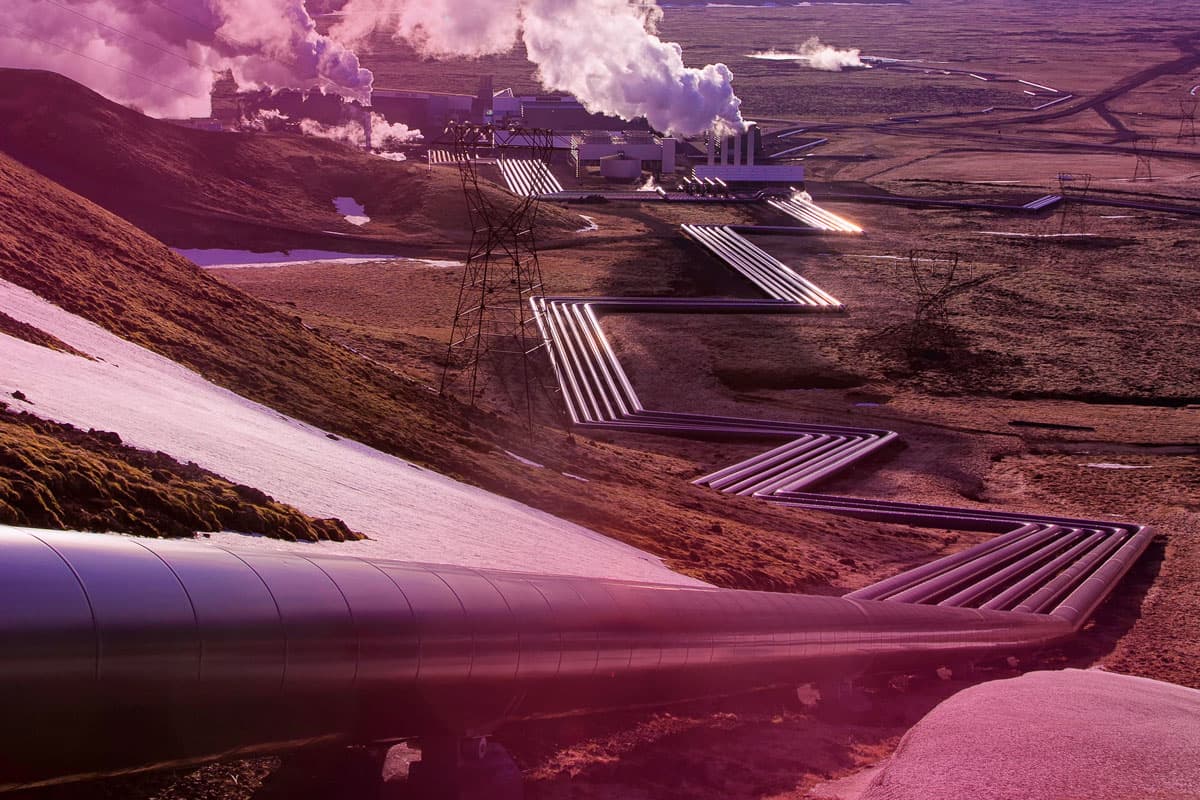
Comparison of Geothermal Energy and Other Renewable Energy Sources
In addition to geothermal energy, renewable energy sources include wind power, hydroelectric energy, solar power, biomass power, waves and tidal energy.
Methods to process these energy types vary, as is the case with costs, efficiency and environmental impacts. Solar and wind power plants prevent emissions harmful to the atmosphere. Furthermore, these plants do not produce any waste
during energy generation. Their environmental impacts are quite low.
However, some chemicals are found in the structure of biomass and geothermal energy sources. Hydrogen sulfite and carbon dioxide gases may be released to the atmosphere when processing geothermal energy. Biomass energy, on
the other hand, may lead to greenhouse gas emissions.
The cost of the power generated from geothermal energy is lower than that of other renewable energy sources. The only exception to this is hydroelectric power plants. Production efficiency of solar power is low. Efficiency of wind power varies, but is still low compared to geothermal energy.
Energy production capacity of hydroelectric power plants depends on precipitation. Geothermal energy plants can provide advantages over other renewable energy sources especially when they are established near residential areas.
History of Geothermal Energy
Although geothermal energy was initially used for heating and cooking only, it was later used to get boron. To this end, first field works started in 1833.
The very first geothermal power plant was established in 1904 and it had an atmospheric steam turbine supplied through a steam-dominant system. The first electricity from steam was generated right at this point. Later on, similar processes were used in Larderello, Italy.
In 1958, first flash works were completed for water-dominant systems in Wairakei. Then, in the 1960s, double-flash systems were added to single-flash systems for sources with high temperatures.
By the 1980s, binary geothermal power plants were established, which were initially just prototypes. These were commonly used at early 2000s.
In Turkey, geothermal energy works were launched in 1962 by the General Directorate of Mineral Research and Exploration. First boring (drilling) works started in 1963, which led to the exploration of the Kızıldere geothermal field in 1968.
By 2018, the General Directorate of Mineral Research and Exploration found 227 thermal sources with temperatures ranging from 35 to 40°C.
You can leave us a comment for the matters you want to learn about geothermal energy.

 Online Services
Online Services Application Inquiry
Application Inquiry Pay Assurance Fee
Pay Assurance Fee Query Installation Number
Query Installation Number Compensation Fee Inquiry
Compensation Fee Inquiry Automatic Payment Order Inquiry
Automatic Payment Order Inquiry Partnership
Partnership


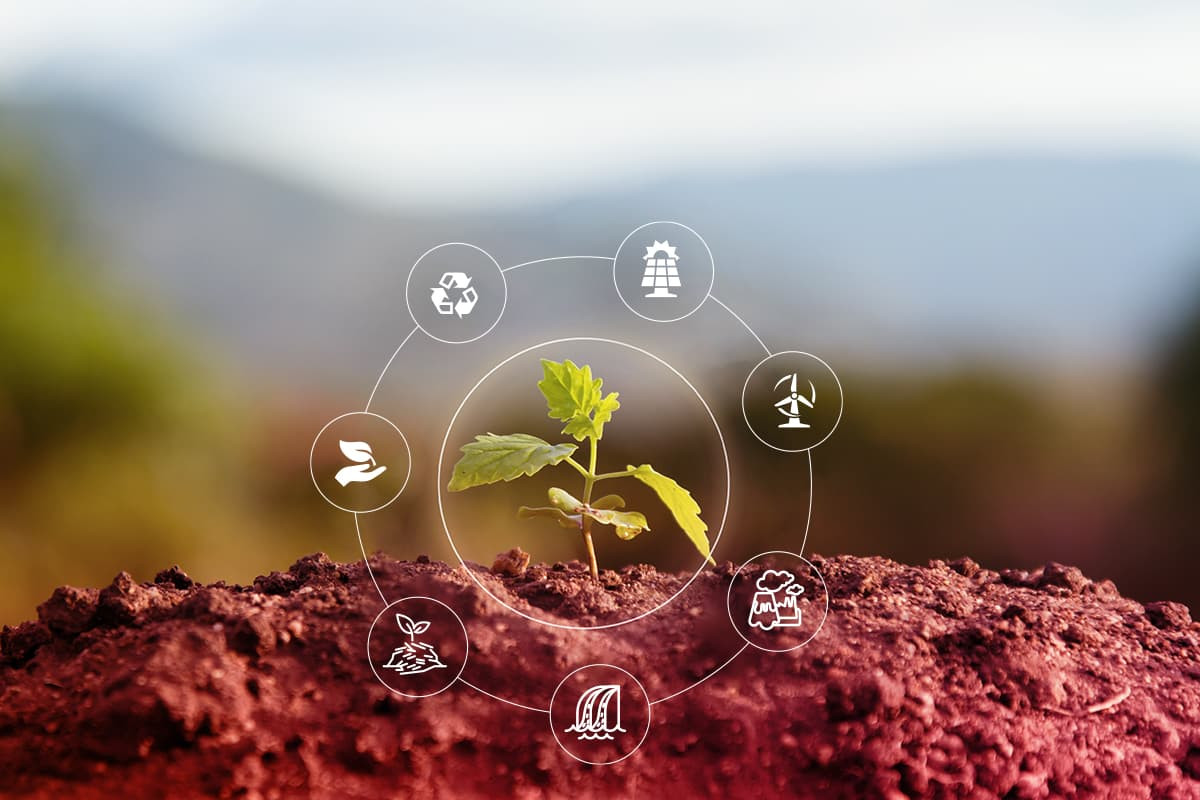
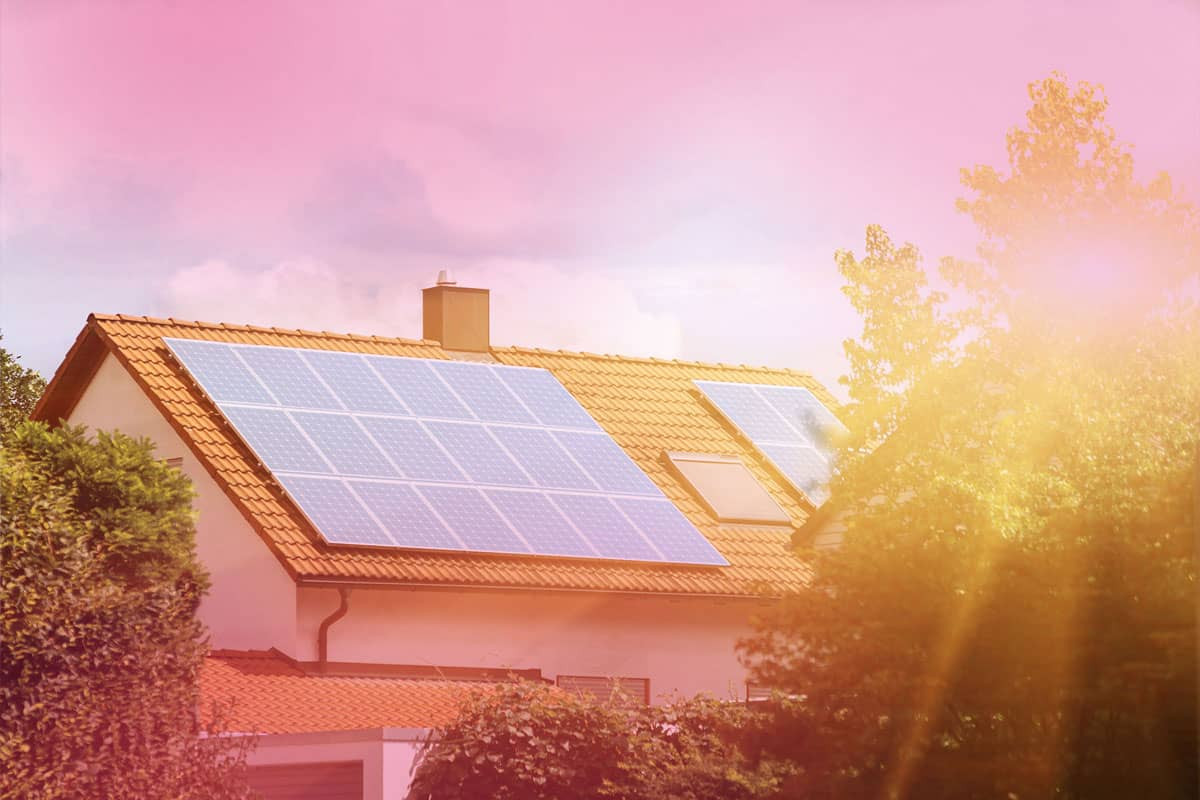
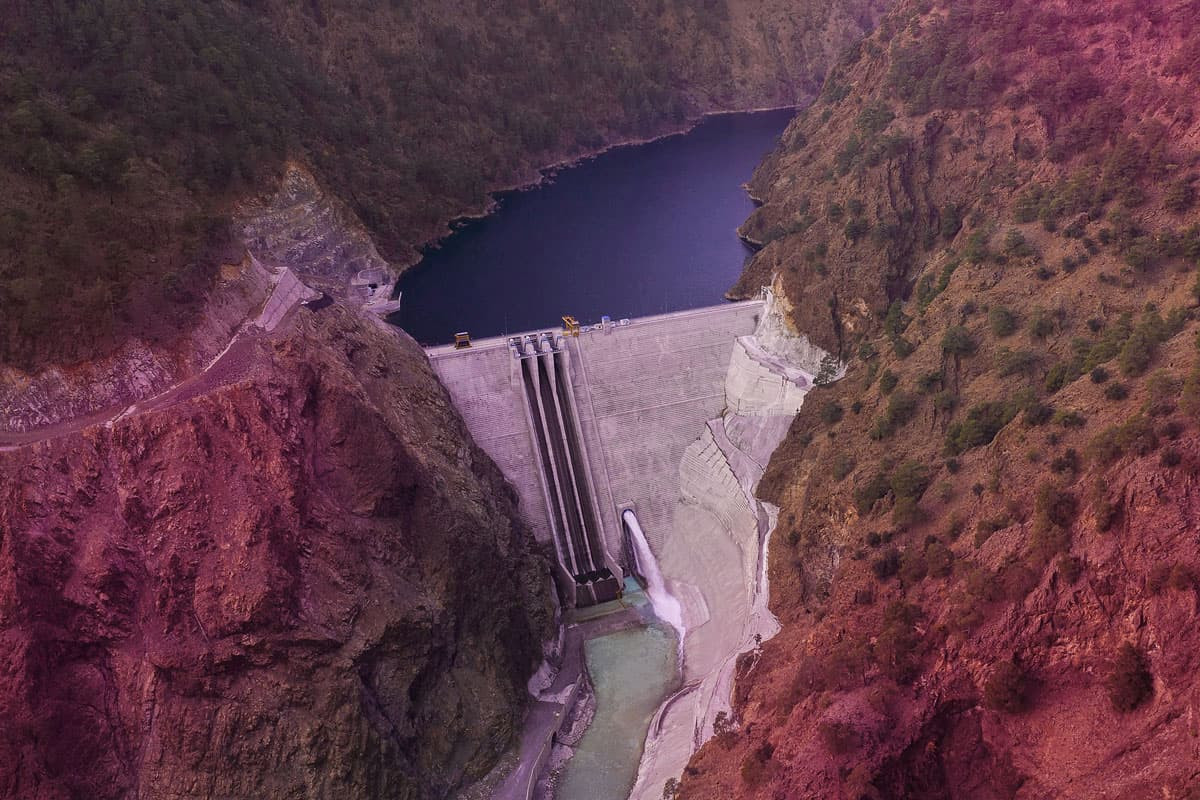
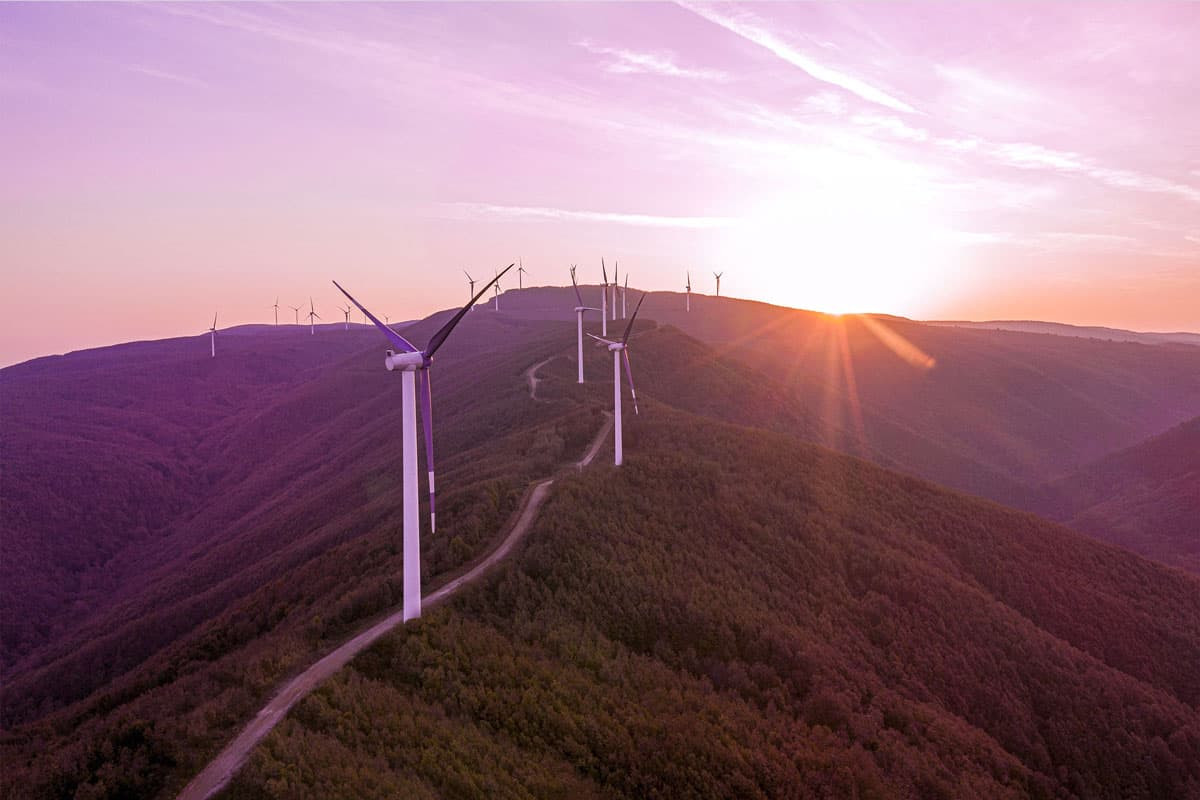
Leave a Comment
Comments (3)
S
Samuel
Termal enerjiden elektrik üretimi ile suyun normal sıcaklığa geldiğinde seralara satılması ve mutlaka bor madeni uretim potansiyeli cok dikkatimi cekti .keske doyurucu bilimsel bilgi ksynaklari olsa da arastirsam diyorum .skm saygılar.
b
bilge
"Bu santraller; kuru buhar, çift çevrim (binary) ve buhar püskürtmeli (flaş) olmak üzere kendi içinde ayrılır. Bu ayrım, jeotermal kaynağın sıcaklığına bağlı olarak yapılır." hepsinin ingilizcesi parantez içinde vrilirken flash yerine flaŞ yazılmış. inanılmaz!!!!
H
Hüseyin KÖSOĞLU
Merhabalar Jeotermal santalda nekıadar yakıt tüketir (1 MWh )